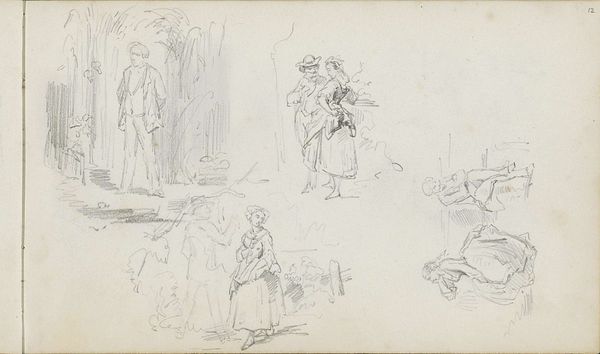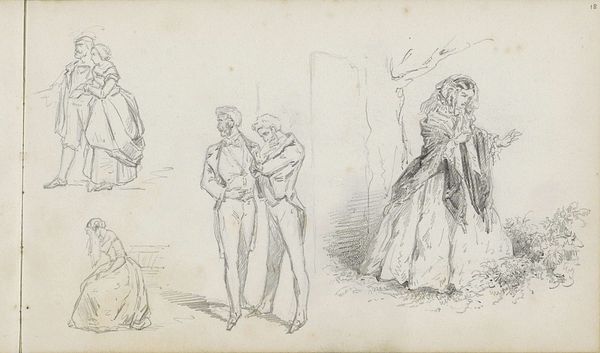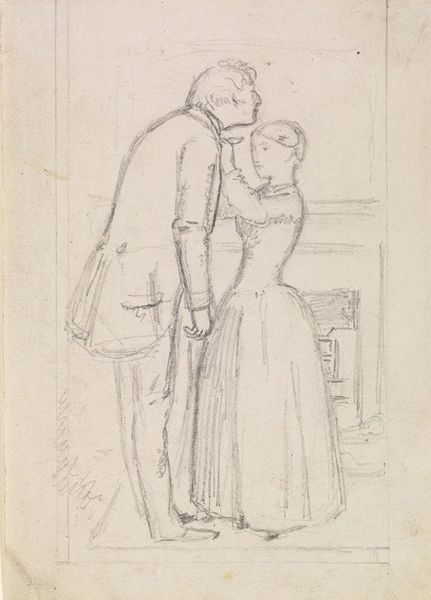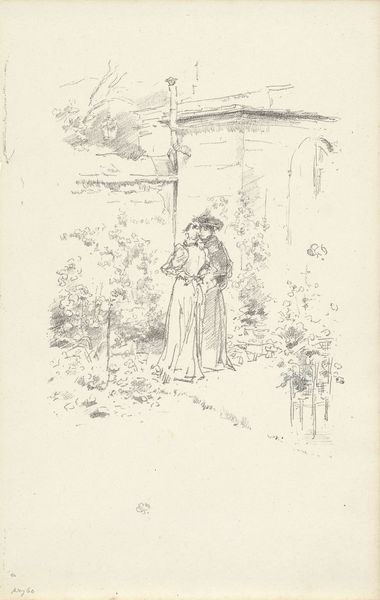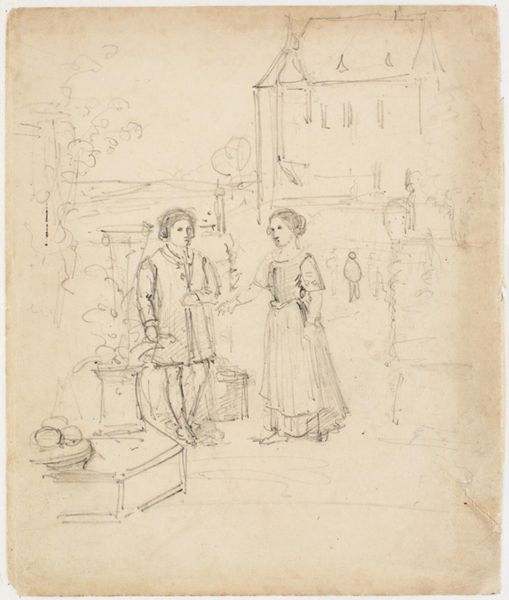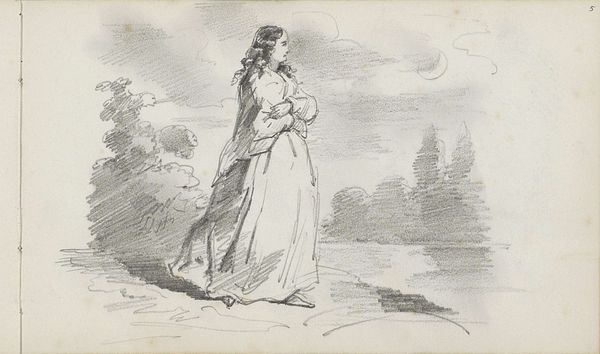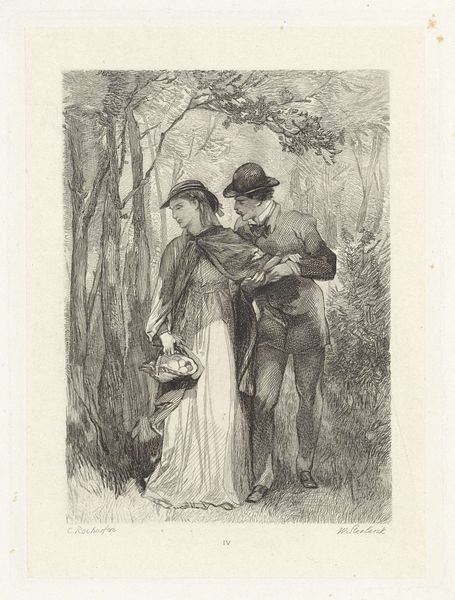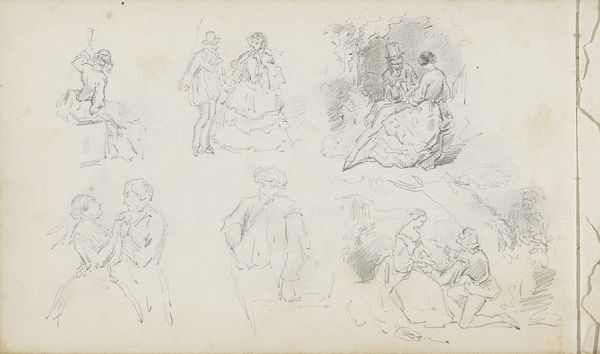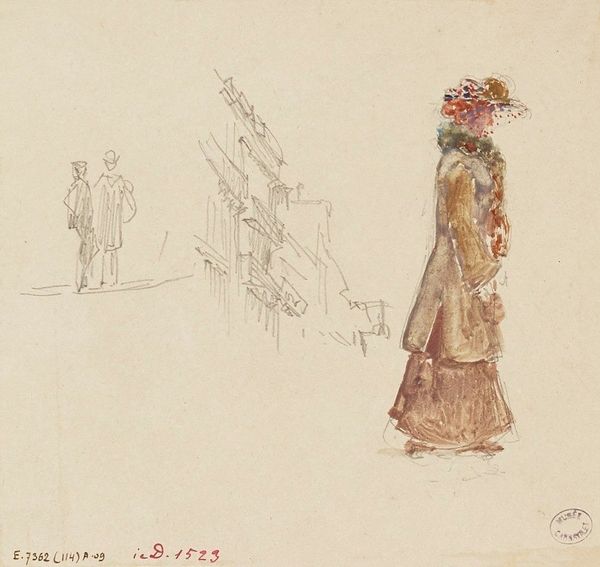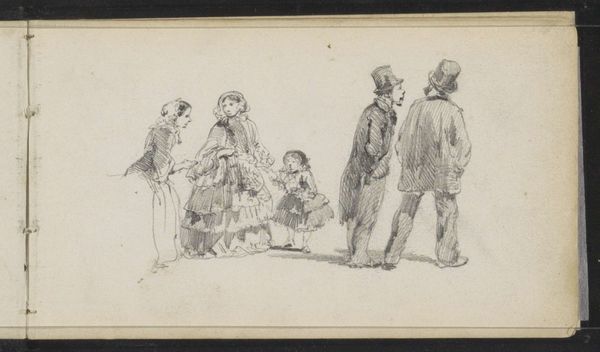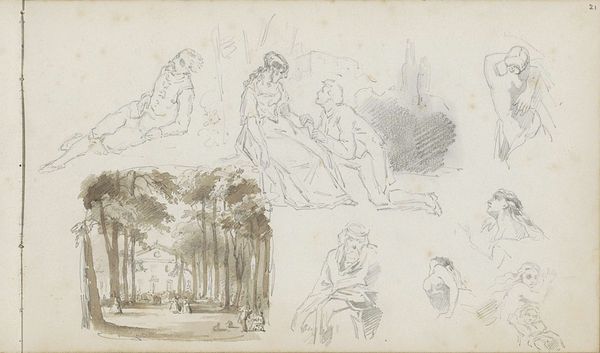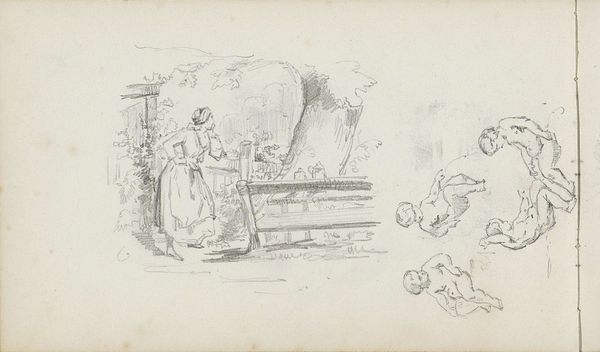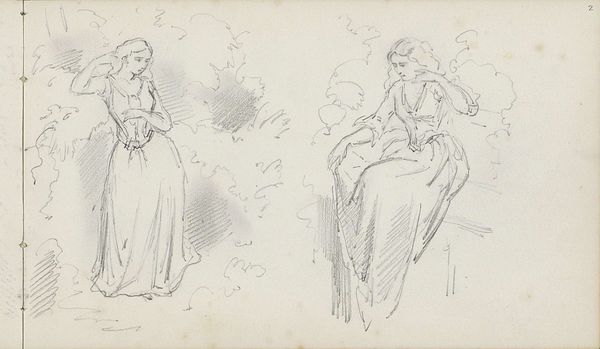
Studieblad met handen, een balkon en figuren in avondkleding c. 1840 - 1860
0:00
0:00
charlesrochussen
Rijksmuseum
drawing, paper, pencil
#
portrait
#
drawing
#
toned paper
#
light pencil work
#
quirky sketch
#
pencil sketch
#
landscape
#
paper
#
personal sketchbook
#
idea generation sketch
#
sketchwork
#
romanticism
#
pen-ink sketch
#
pencil
#
sketchbook drawing
#
genre-painting
#
sketchbook art
Copyright: Rijks Museum: Open Domain
Curator: This drawing, created by Charles Rochussen circa 1840 to 1860, is called "Studieblad met handen, een balkon en figuren in avondkleding." It resides here at the Rijksmuseum. What's your initial impression? Editor: It feels like a fleeting glimpse into a bygone era. There's a delicacy in the pencil work, a certain nostalgia evoked by the figures in evening dress. Almost dreamlike. Curator: I see this page, most likely torn from a sketchbook, as a testament to the creative process itself. Consider the toned paper—not pristine, but worked. You can see the layering of sketches; a hand study floating above a meticulously rendered gentleman. The material tells a story of constant observation, of honing one's craft. Editor: Indeed, but those isolated sketches contribute to a layered symbolic effect. Hands, for example, throughout art history, denote skill, labor, and communication. Rochussen gives us disembodied hands, inviting contemplation about intent and purpose. Are they reaching, gesturing, or simply… existing? Curator: I'm inclined to see them as studies for future works. Rochussen was a popular genre painter and illustrator. Knowing that, and looking at the fashion of the dressed figures, it highlights how artists utilized sketchbooks as practical tools for developing marketable imagery that catered to bourgeois taste. Editor: Yet the placement, the overall composition… it suggests a narrative, doesn’t it? The balcony, the figures in fine attire, almost like a scene from a play. A certain class is evoked but then you look closer: The figures' blank faces make them universally recognisable and ambiguous, imbued with Romantic-era themes. Curator: Precisely. The materials—pencil and paper—were relatively inexpensive and accessible, facilitating Rochussen's rapid idea generation and experimentation within the demands of the art market. These quick notations reflect a certain democratization of art production, responding to wider audiences, with Romantic sensibility. Editor: I'm captivated by how Rochussen blends specific, era-based details like the clothing styles, but diffuses this precision with this almost universal symbolism. It suggests a deep and timeless longing in these characters. Curator: Viewing art through the lens of production reminds us that even the most seemingly ephemeral sketches have material origins, linked inextricably to broader social and economic realities. Editor: And observing imagery in the sketch, the romantic figures, remind us about the beauty and power of universal symbols to transcend epochs and class differences.
Comments
No comments
Be the first to comment and join the conversation on the ultimate creative platform.
